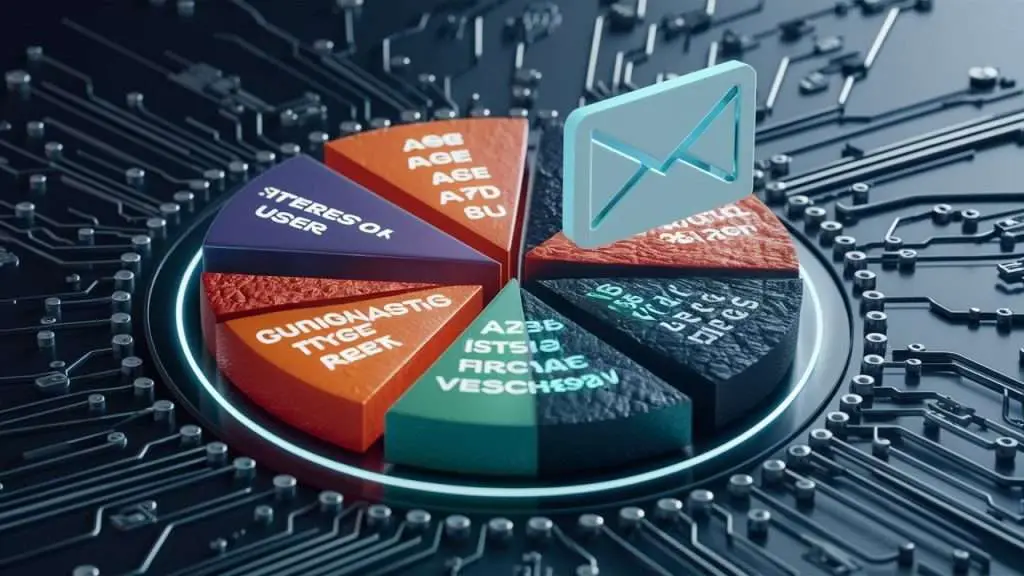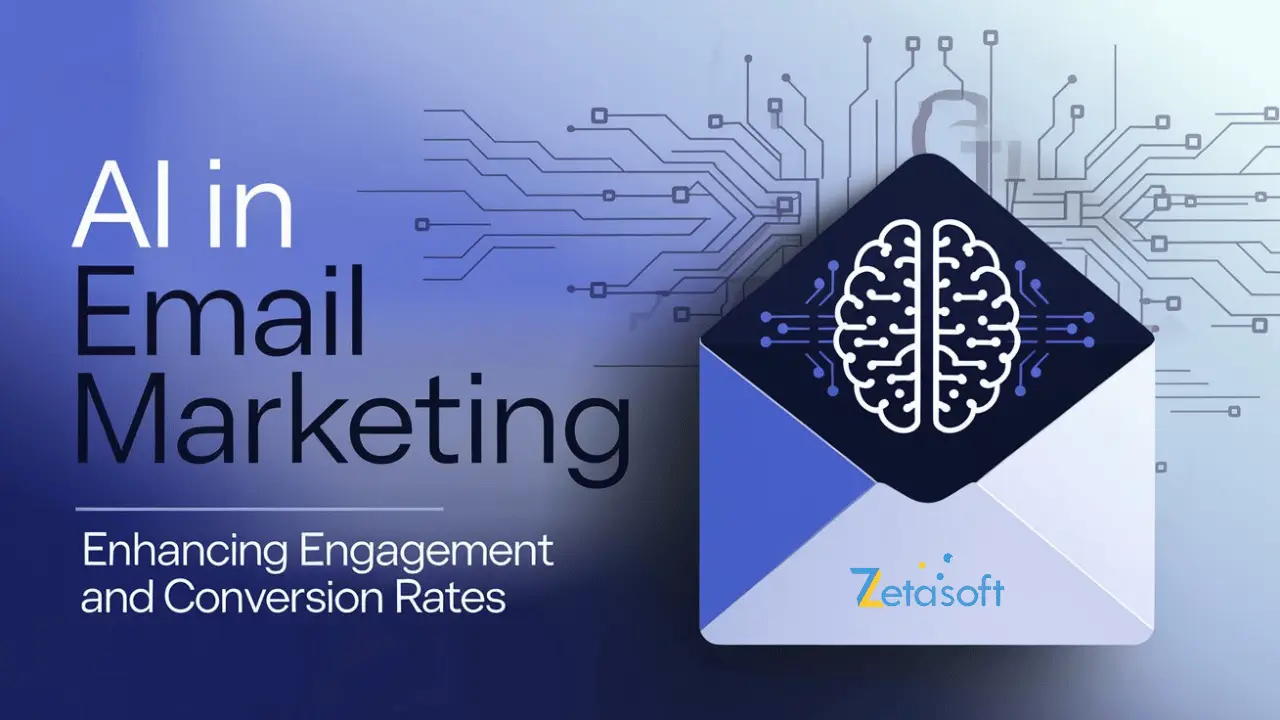Nevertheless, email marketing is still one of the most perspective digital marketing tools as far as ROI is considered in comparison with other types of marketing channels. But the fact is that as consumers’ awareness is growing the more it becomes insufficient to attract their attention and to make a call to action to use traditional e-mail marketing. Well this is where Artificial Intelligence (AI) comes in. AI can be incorporated into email marketing in order to increase the level of interest from viewers, provide more tailored content, and see a large increase in conversion rates. Here, we’ll discuss AI in Email Marketing & how is AI impacting the future of email marketing, The benefits of AI in email marketing strategies & practical insights to engage and converting your audience using AI.
Personalization at Scale

in The AI in Email Marketing, Includes the appeal of AI to email marketing is the high level of personalization it can achieve with a large number of messages. Traditional marketing personalization involves mere use of name to call in recipient’s name, while AI goes beyond and provides customized content based on usage, number, or any insight of the user.
Dynamic Content
AI allows marketers to work on developing emails with dynamic content connected to the recipient’s specific characteristics. This type of content modifies depending on the recipient’s history, attributes or choices. For example, the customers, who regularly visit a men’s clothing section of an e-commerce site, will be offered new arrivals in men’s fashion while others get recommenced products on the basis of the women accessories that they bought earlier.
Moving slightly further from this concept, it surpasses the basic level of segmentation, and guarantees that whoever was targeted received content that makes them feel it was made just for them, hence improving the chances of a response.
Analyzing for Better Personalization
AI can thus use predictive analytics to look into previous user behavior and have an inclination on future conduct. Through making the estimations regarding the product likely to be purchased most, the time the customer is likely to engage and the mode of interaction likely preferred by the customer, the marketers can create more effective emails over the customer. For example, if a customer frequently purchases during sales events, AI can ensure they receive early access to promotions, driving higher engagement and conversion rates.
Behavior-Based Trigger Emails
Promotional emails that include bright calls-to-action may be used in combination with behavioral triggering, which is already familiar in email marketing, but with the help of AI, it will be even more effective. AI can give out when it is the best time to remind a user about the application through email, from their previous use of the application. If a customer is likely to open the emails in the evening, the abandoned cart email will be sent to him in the evening, and this increases chances of a conversion. Trigger emails always take the conversation further with the customers and provide them with relevant offers or content at the most appropriate time putting your brand into their consideration front of mind.
Enhanced Segmentation

AI in Email Marketing Includes, Segmentation has always been at the core of email marketing, but with the help of AI, it is possible to enhance this process to levels not previously reachable. It can utilize big data for purposes of identifying points to create fine sections that make communication targeting more effective.
AI-Driven Micro-Segmentation
AI enables precision marketing, meaning audiences have to be divided into smaller groups because of tiny differences as in behavior, demographics, and historical activities among other factors. While other approaches strive for too broad lofty goals such as targeting customers who bought in the last month, AI can allow you to target those who bought a particular product, visited your website frequently or clicked on a specific type of email content. This customization leads to high open rates, click through rates and subsequently captures conversions.
Real-Time Segmentation Updates
As emphasised earlier, segmentation is not a one-off activity in the case of AI. They also allow as to adjust segments in real time based on shifting user patterns as seen in the following. For instance, if a customer is beginning to show interest in a particular segment of products, AI makes it easy to move them to another segment instead of physically altering the process by requiring your team to do it. This dynamic segmentation keeps your email campaigns agile, ensuring that content stays fresh and aligned with user interests.
Targeting Based on Potential Purchase
Another thing that can be accomplished by AI is to forecast the probability of a purchase based on users’ activity. AI can analyze past purchases, browsing history, interaction patterns, and then conclude about the probability of a particular customer in converting soon. Marketing departments can then cross-sell to these relatively high-quality leads via timely e-mail messages that provide additional enticements or suggestions designed to the end that a decision to purchase be made.
Optimizing Email Timing

From the AI in Email Marketing, Email marketing is good but timing matters a lot. There is nothing as bad as sending an email to the wrong time when no one is going to open the email. That is why AI can assist marketers in picking the best time to send out the emails since AI reviews the data of the users and their habits.
Send Time Optimization
What set time can AI use in order to evaluate the specific time of when the recipients might be most responsive to emails? Instead of reaching out to your entire list and blasting your emails, you as a marketer get to send the emails to each recipient at that proper time.
For some, this could be the rush hour in the morning and for others, this could be the late evening rush hour. When the messages are delivered at a time the recipients are most likely to open them, AI ensures the emails gets opened and the likelihood of conversion realized.
Frequency Management
First, as part of the run time analysis, AI can coordinate optimum when emails should be sent, and second, it can also co-ordinate the frequency of sending emails to different individuals. Certain customers are always comfortable with receiving emails every day while others will only be comfortable receiving them once a week or once a month.
There are a lot of cases when AI can analyze the User’s activity and frequency of his interactions with the application so that the User would not get bored and It would not seem to the User that It sends him too many letters or null or vice versa. This frequency management means that one is able to manage the engagements properly and thus cut the chances of people who might decide to unsubscribe fully.
Automating Time Zones
Another obvious struggle that a globally operating company might face is extreme difficulty when it comes to time management to send out the emails. To avoid this inconvenience, AI intervenes with the help of the function that allows the time of sending messages to be adapted to the recipient. This protects your customers in case they are located in different time zones, your email will reach them at their correct time zone.
A/B Testing and Content Analysis

AI in Email Marketing Helps in Email Marketing, AI improves A/B testing more than anything else, helping marketers to better understand how individual email components compel recipients to take action. The ability to analyze user interactions is that in real-time AI will be able to show content that yielded the most results with subject lines and images.
AI-Powered Subject Line Testing
Learning proper subject lines is very vital in the success of an email opening since people only open those that interest them. It can employ several techniques to analyze past data to know which of the subject lines increases the chances of the recipient to open it. AI is able to analyze and select the appropriate subject line for the rest of the campaign having tested it on small parts of the audience. It limits the guesswork in the subject line testing while making your emails better and ready to open more frequently.
Optimize Email Content with AI
While subject lines are tapped as the typical area for AI optimization, there are other areas in your email content where its application can be useful, ranging from images and CTAs to body text. AI can view how users interrelate with the content and determine which aspect receives more attention and can recommend modifications to increase the conversion of future campaigns.
For instance, if users are more likely to click through images rather than text links, AI will suggest that you make more image links in your emails. This means that the layout and content of the e mails that you are sending are always as engaging as possible and crafted from real usage data patterns.
Multi-Variant Testing
It must be noted that in the case of traditional A/B testing approach, marketers are able to test only about two variables of change at given time. However, with AI variants of one aspect of a conversion can be tested at a time; the elements of an email such as the subject lines, images or the call to action. This accelerates the overall testing process and gives more helpful information about the kind of content that is effective in reaching your audience.
Reducing Churn and Improving Retention
![]()
AI in Email Marketing, AI can also be used to track patterns that can be indicative of which customer is most likely to churn, or cease interacting with the company and its messaging. Using prediction models AI marketing can develop ways of ensuring that such consumers are retained and kept on their toes with offered rewards such as follow up e-mail promotions.
Predictive Churn Analysis
AI can determine details such as engagement levels or lack of it and therefore determine early signs when a subscriber may be planning to churn. For instance, if the customer has not been opening emails, or messages from you, they has been inactive or dormant for sometime, then smart tools mark them as such. Marketers are then able to send retention campaigns with offers or with some sort of incentive to get them engagement back.
Re-Engagement Campaigns
Depending on AI analysis of clients, marketers can develop re-contacting campaigns that suit particular clients. These campaigns may contain special promotional offers, products, services or even products suggested based on the customer’s previous activities. If you can use re-engagement correctly, and segment your email list effectively, then there is a way to bring those subscribers back into the fold and lower churn overall.
Customer Lifetime Value (CLV) Optimization
Thank to data analysis, AI can accurately estimate CLV based on purchaser’s behavior and interactions. High value customers mean that marketers can implement email marketing communication to develop these form of relationships and hence provide specific promotional offers to customers which will see them rebuy or stick to a certain brand.
CLV gives brands an edge because it directs their attention to those customers, who are most likely to spend more in the future and hence garners more resources for such customers hence much strategic and profitable email marketing campaigns.
Summary
AI is revolutionizing email marketing by increasing engagement, personalizing them, improving content, timing and segmentation. With the help of AI tools and approaches, companies can send e-mails that meet recipients’ interest and make them click-through.
in The AI in Email Marketing, Everything from personalization and automation to predictive analytics and data-driven send times and behavior-based triggers, are made possible through the help of AI. In the future, therefore, the incorporation of AI into email marketing is going to be an important aspect of ensuring that you get the best results from your email marketing strategies.

